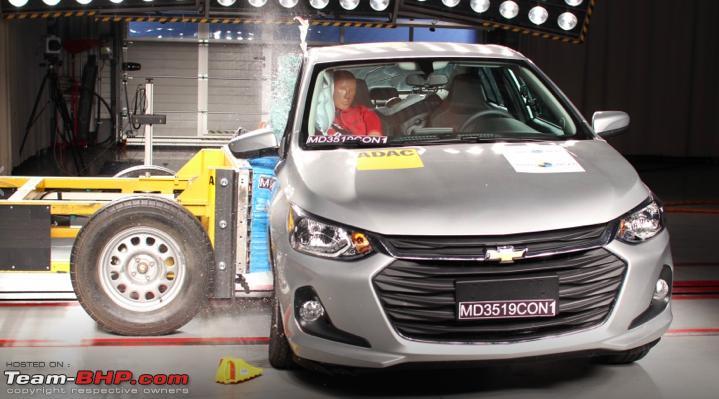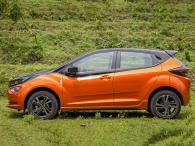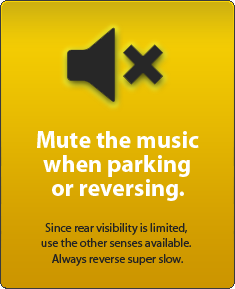News
2022 Global NCAP crash test protocols for cars in India
The new Global NCAP protocols for assessing the safety performance of cars for the Indian market will be enforced from July this year.
BHPian ron178 recently shared this with other enthusiasts.
The Global New Car Assessment Programme (Global NCAP), the FIA-funded body that evaluates the safety performance of vehicles in emerging markets, has been testing the frontal crash performance of some passenger cars on the Indian market under its Safer Cars For India project since 2014.
Fifty cars have been evaluated from January 2014 to February 2022, with a number of five-star results and even one Safer Choice Award.
Until 2022, ratings for adult occupant protection have been assigned based on the following:
- A 64km/h offset deformable barrier frontal crash test
- Front seatbelt reminders
- Prerequisites for five stars: A 50km/h (UN Regulation 95) side impact and ABS brakes
You can find out more about the old adult protection ratings on this thread.
The protocol used for evaluation was Latin NCAP's 2013-2015 protocol for adults and 2010-2013 protocol for child occupants.
The rating was based on a total of 17 points, out of which 16 points came from 4 body regions of the frontal crash (4+4+4+4) and 1 point was awarded for seatbelt reminders.
There were balance limits for the scores to achieve a certain star rating. Five stars required a minimum score of 14 including 1 whole point for seatbelt reminders + passing ECE Regulation 95 side impact + 4-channel ABS.
There were star caps for having poor protection for a critical body region: zero stars if directly based on dummy readings and one star if poor after applying penalties.
New evaluation for 2022
Starting July of 2022, Global NCAP will introduce new protocols for assessing the safety performance of cars for the Indian market.
The baseline of this protocol is 2002 Euro NCAP or 2016 Latin NCAP, however, there have been several modifications to include more modern and relevant technologies in the protocols.
Adult and child protection ratings will still continue to be awarded separately, but there will now be major differences in each of them. The colour of the stars used to indicate the results is now expected to be yellow instead of blue and green, which will indicate if a result is under the new protocols.
The new protocols will evaluate the following:
- A 64km/h offset deformable barrier frontal impact, with a few changes in evaluation
- A 50km/h MDB side impact (pre-2015 Euro NCAP)
- Front and rear seatbelt reminders
- Electronic Stability Control (ESC): UN GTR8 robotised sine-dwell test
- Pedestrian Protection: Regulation 127 or GTR9
- A side pole test (lateral, 29km/h) for cars with a side head protection device (eg. curtain airbag)
There will be extra awards which Global NCAP is expected to announce soon. They are likely to include different types of AEB but an official announcement is awaited.
The new assessment protocols can be found here:
Child occupant protection will include a number of changes, including using the extra data from Q-series dummies in the assessment, side impact scoring in the dynamic test, crediting i-Size approved positions, and awarding 0 points for the vehicle-based score if the car has a lap belt in any position.
This thread will only cover adult protection.
Frontal impact
The test configuration for frontal impact will be the same as that used by Global NCAP since 2017, which means that frontal impact results from older tests may be reused and included in new results. Tests from 2014-17 may not be reused because they use older P-series child dummies.

(Picture credit: Latin NCAP: Chevrolet Onix Plus sedan + 6 airbags 2019)
There will be a few changes to the scoring in the frontal impact:
- The chest compression (rib deflection) limits will be made more demanding. This is a change that was introduced in Euro NCAP in 2013.
- In cases where there is hard contact, the head injury will be calculated using a more modern form of Head Injury Criterion (HIC15) which better estimates the risk of injury in cars with airbags than the old criterion, HIC36. In HIC15 the HIC function is maximised over a period of 15ms instead of 36ms.
- A penalty will be applied for high shoulder-belt loads. Cars without seatbelt load limiters might have problems (credit to BHPian rpm for the example).
- If the passenger compartment and/or footwell remains stable but it is found after stripping the car that structural reinforcements are biased towards the driver side, then the relevant penalty will be applied nevertheless, unless the manufacturer can present evidence otherwise.
- The following penalties may now be applied to the front passenger too: A-pillar displacement, unstable structure, footwell rupture, shoulder-belt load.
- If there is hard contact of the passenger's head with the fascia, the head score will be reduced by a point regardless of dummy readings.
- If the ballast in the tank leaks after the crash, a one point-penalty is applied for fuel leakage.
Side impact
The big change in the new protocols is the presence of a side impact in the total scoring. The side impact is scored out of 16 points like the frontal impact.
You might recall that some cars (Nexon, XUV300, Punch) had to undergo a side impact to achieve a five-star rating under the new protocols. That was a very basic UN Regulation intended as a pass/fail homologation test.

(Picture credit: Latin NCAP: Chevrolet Onix Plus sedan + 6 airbags 2019)
The new side impact that is introduced will be different from the one you saw on those cars. In the new side impact, the barrier, speed and impact location will be the same. However, the dummy will be positioned differently and there will now be child dummies in the back seats in the recommended child seats. This is an older Euro NCAP side impact, not a UN regulation.
The body regions in the side impact are:
- Head 4 points
- Chest 4 points
- Abdomen 4 points
- Pelvis 4 points
The injury criteria for the head and chest are the same as those used in frontal impact (see thread). For the abdomen and pelvis, refer to the protocol.
Cars will be penalised for incorrect airbag deployment (see old frontal impact), and for taking advantage of weak dummy anthropometry, i.e., using those parts of the dummy to transmit forces, that are not present in a human, and for fuel leakage.
If a door opens in the side impact the score is penalised by only one point, even if it means the car would fail UN regulation, not all points for the test are lost.
Seatbelt reminders
In the old protocols, there was one point for seatbelt reminders, only for front occupants.
There will now be two points for seatbelt reminders, one for front occupants and one for seatbelt reminders for rear occupants.
The one point for front occupants is distributed as 0.5 for the driver and 0.5 for all front passengers combined, divided by the number of front passengers for each passenger.
For example:
- Maruti Wagon R: 0.5 driver + 0.5 front passenger
- Fiat Multipla: 0.5 driver + 0.25 1st front passenger + 0.25 2nd front passenger
Rear seatbelt reminders will only be awarded if front seatbelt reminders score the full 1 point. Rear seatbelt reminders are not divided for each occupant, but are awarded the full one point only if all rear seating positions have it.
Continue reading BHPian ron178's explanation for BHPian comments, insights and more information.
















_5.jpg)




